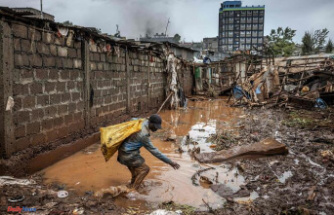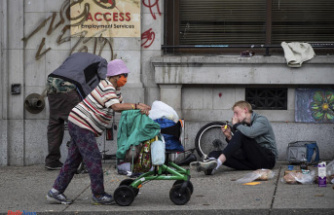Snow is always welcomed by lift operators, especially when it falls naturally from the sky. This saves electricity and money, this season more than ever. In the Sauerland, however, most operators are in a relatively pleasant location at least until New Year's Eve.
Winterberg (dpa/lnw) - Ski lift operators in the Sauerland hope every winter that it will snow a lot and that as little help as possible with "snow cannons" will have to be used - this season, however, there is a lot at stake given the high electricity prices. Many operators still have contracts with favorable conditions until the end of the year and want to bring as much as possible onto the slopes in December, as Susanne Schulten, spokeswoman for the Sauerland/Siegerland-Wittgenstein winter sports arena, reports. If it gets warm and rainy afterwards, it could get expensive. Ticket prices should rise only slightly, if at all.
In addition to the increased energy costs, there are also increased wages and general cost increases, so that the ski areas are assuming an additional burden of 20 to 30 percent, Schulte reports. "For us, as for all tradespeople with energy needs, this is a difficult situation, and above all a situation that is difficult to assess," says Nico Brinkmann, who operates ski lifts on the Kappe near Winterberg and has a good 60 snow guns in use. At a good 80 percent, snowmaking accounts for the largest part of electricity consumption, the rest is mainly due to the operation of the lifts.
Brinkmann is one of the operators in the region in the comparatively fortunate position of having an existing contract. That means: in the current year it can produce snow at the same costs as in previous years. The fact that snow is first used in December is normal and not unusual this year, explains Brinkmann. After all, the slopes should be white for the first highlight of the season - the Christmas holidays.
After that, the operators expect a “quite uncertain situation”, as Brinkmann explains. It is becoming apparent that there are no contracts with fixed prices and that electricity has to be paid at current prices. Operators will then have to be prepared for significantly higher electricity costs. According to Brinkmann, they at least benefit from the fact that snow is usually made at night when it is colder and the lifts are not running - then electricity is usually cheaper. However, if the worst case scenario occurs and there are green meadows everywhere on December 31, according to Brinkmann, things could get tight for some companies.
According to the winter sports arena, the additional burden should only be partially passed on to ticket prices. In the larger areas, price increases of five to ten percent can be expected.
According to Brinkmann, it is difficult to save on snowmaking. "We don't really have many levers to do something differently," he says. However, he would not describe winter sports as particularly energy-intensive, the ski industry should rather be used as a "scapegoat". "Yes, we consume electricity, but certainly not above average compared to other sectors," he says. According to the winter sports arena, it takes two gigawatt hours to provide the 65 kilometers of snow-covered slopes in the entire region with enough snow. This roughly corresponds to the average annual consumption of 800 two-person households.












